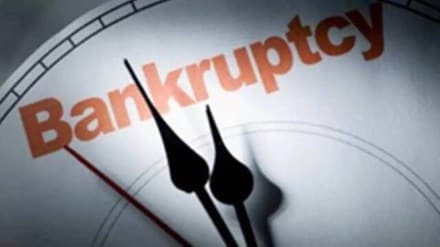The initiation of insolvency proceedings against Go First has once again highlighted the issue whether third-party assets—not owned by a company but held on lease—can form part of the resolution process.
Unlike most other insolvency cases—filed by banks when companies default in payment of loans—Wadia Group’s Go First filed for voluntary insolvency. It had not defaulted on payments of financial creditors till then and therefore was technically not barred under Section 29A of the Insolvency and Bankruptcy Code from offering a resolution plan.
Also read: Don’t hamstring creditors: Insolvency board’s proposal for preference voting is flawed
The National Company Law Tribunal (NCLT) admitted its petition and granted a moratorium on any kind of payments pending a resolution plan. The twist in the tale came with several lessors demanding their aircraft back. They moved the National Company Law Appellate Tribunal (NCLAT), and on not getting a relief there, went to the Delhi High Court where the matter is pending.
It is here that the matter relating to leased assets and whether they can be part of an insolvency process got raised. And this was not the first time. Senior advocates arguing on behalf of the lessors pointed out that since aircraft are not the property of Go First, neither the bankruptcy tribunal nor the interim resolution professional have any rights over them. Implicit in this was that since aircraft are leased upon approval of the Directorate General of Civil Aviation (DGCA), if the lessors want to take them back, the former has no option but to allow the same.
If only the legal machinery or the government had been more proactive in the matter of third-party assets and the IBC, this issue would have been addressed long back. It does sound strange that despite the IBC undergoing several changes since coming into force in 2016, to expedite the bankruptcy resolution process, there have been no discussions on the issue of third-party assets. What’s even more strange is that a categorical legal pronouncement, which could have served as a precedent, is also lacking.
This despite two major cases where the status of such assets has led to the entire resolution process being stuck for years. Interestingly, in both the cases huge amounts of dues are owed by the companies concerned to not only the banks but even to the government. The matter in both these cases went up to the Supreme Court, but even then, a firm judicial pronouncement in this regard is yet to come.
The cases are of Aircel and Reliance Communications, which date back to 2018. As the resolution plans in both the cases progressed and successful bidders were approved by their committee of creditors, the department of telecommunications raised objections, similar to those being raised by the lessors of Go First today. Spectrum dues totalling Rs 37,588 crore (Aircel’s Rs 12,389 crore and RCom’s Rs 25,199 crore) were owed to the government. The DoT’s contention is that once the company defaults on spectrum payment, as per the licence agreement, DoT has the right to take the spectrum back from the defaulting company. Spectrum is not the property of the defaulting company, but is a leased asset. However, spectrum is also key to the functioning of a telecom services firm, just as aircraft are to the operations of any airline. If spectrum is taken away, no resolution process can go ahead. Quite similarly, if the NCLT or DGCA allows the lessors to take back their aircraft, there’s no point in even trying for a resolution plan to make the airline fly again.
It is not that the legal apparatus has not tried to address the issue. But the solution provided seemed contradictory or, at the very best, like putting the cart before the horse. The NCLAT in the Aircel matter, ruled in April 2021, that spectrum can form part of a resolution process but only after the company clears government dues. This meant for any resolution plan to go ahead, Aircel and RCom first needed to clear dues worth Rs 37,588 crore to the government. This hardly solved the problem as how would a bankrupt company that cannot pay off bank loans pay dues to the government? The CoC of Aircel therefore took the matter to the SC in October last year, where it is currently sub-judice. Admitting the case, however, the SC bench did observe that the law needs to be settled on the issue.
In the course of the hearing, the counsel of Aircel’s CoC did raise a valid point that NCLAT’s direction to settle DoT’s dues first would amount to preferential treatment to the government department, which happens to be an operational creditor. Since operational creditors are paid after the financial creditors under IBC, any payment made first to the DoT would mean discriminating against other operational creditors.
Also read: Preparing for the global minimum tax
The same issues are likely to be raised in the matter of Go First. The airline may not have defaulted on payments of financial creditors but owes them Rs 6,521 crore. But it has defaulted to the tune of Rs 2,660 crore toward aircraft lessors and Rs 1,202 crore towards other vendors. Surely no policy or legal ruling should give preferential treatment to a government department over private lessors/vendors if both are categorised as operational creditors.
Since amendments to the IBC are discussed by the government on a regular basis, the one issue which therefore needs to be addressed on a priority basis is how to deal with third-party assets if they form the core of a company’s operations. A faster pronouncement of an order in this regard by the SC is equally needed.
Rishi Raj, rishi.raj@expressindia.com
